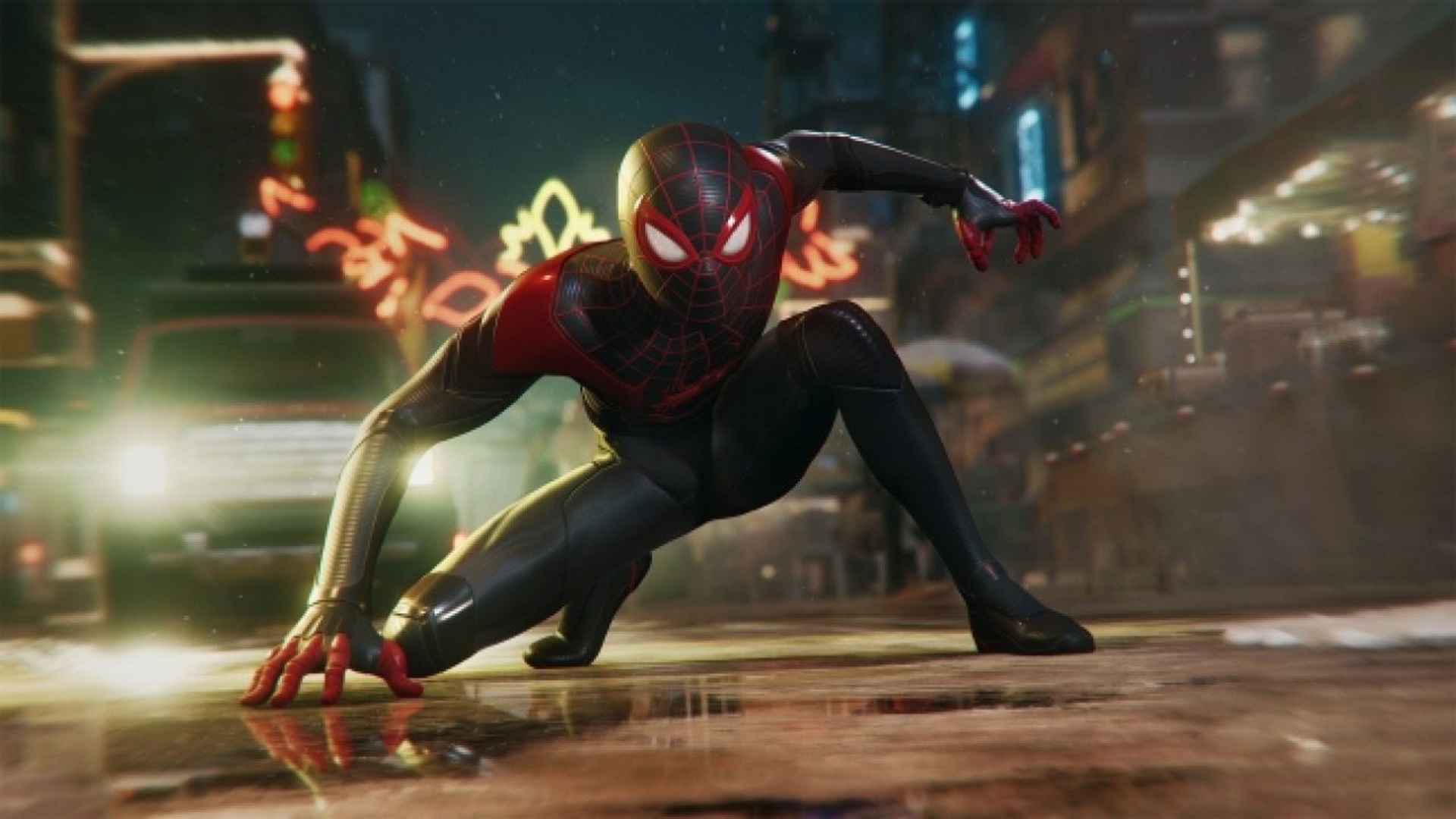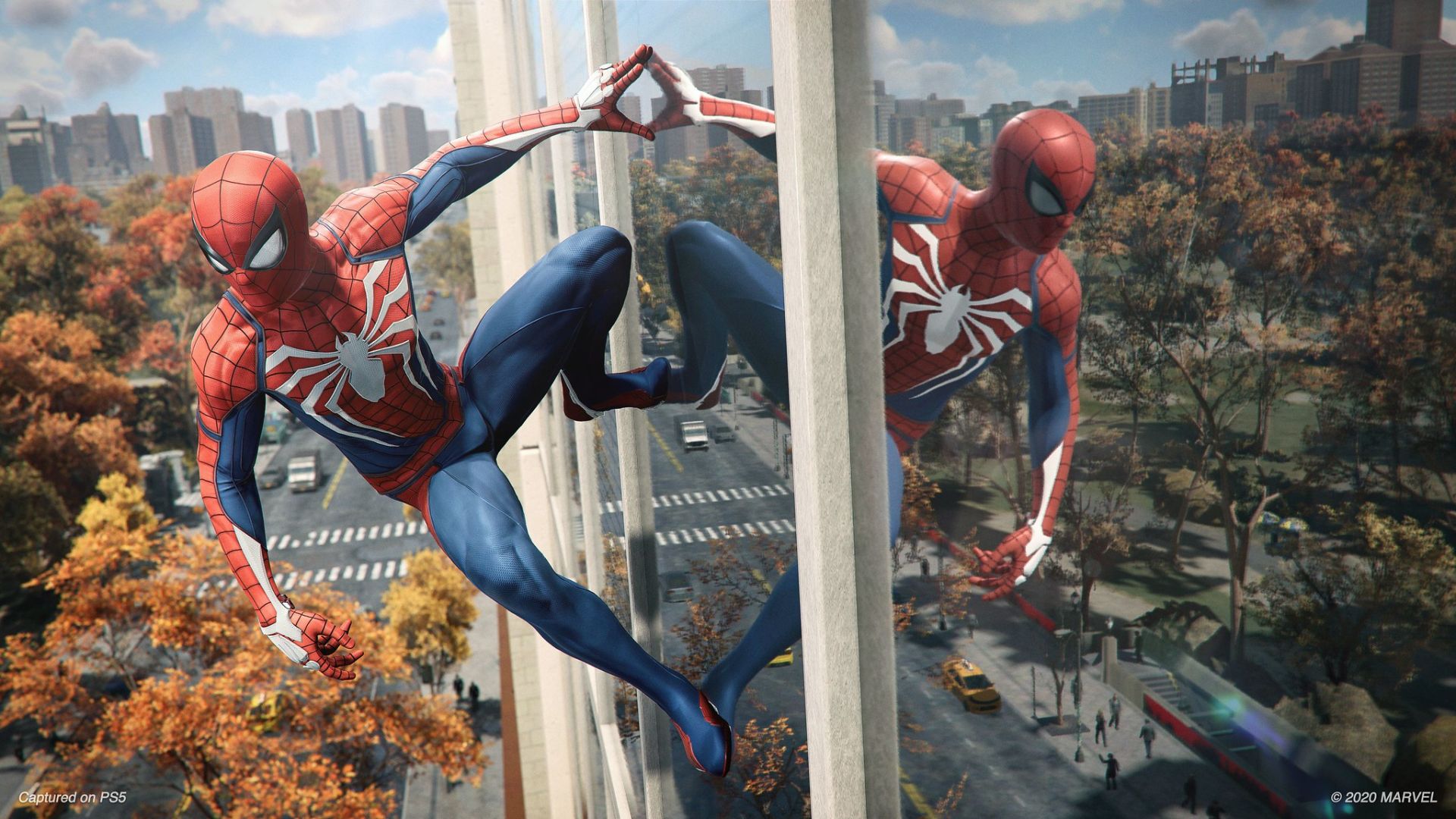
The 2018 Spider-Man game arrived relatively late in the PlayStation 4’s life cycle. The PlayStation 4 Pro was already a mature product and the rumour mill was abuzz about the ninth-generation consoles that were set to launch in a couple of years. First party developer Insomniac Games leveraged their experience working with Sony hardware — these are the people who delivered the Resistance and Ratchet and Clank series – so at this point they are a technical force to reckon with. From the effortless gameplay and rock-solid performance to the remarkably detailed environments and characters, Spider-Man 2018 was a compelling reason to get a PlayStation console.
This year, we’re getting not one, but two Spider-Man games on the PlayStation 5: Spider-Man Remastered and Spider-Man: Miles Morales. As one of the more technically accomplished games in the eighth-gen, it’s somewhat surprising that Spider-Man’s getting the remaster treatment and that too so early. Nevertheless, here we have it. Running on the same engine and largely utilizing the same assets, it’s fascinating to compare these titles to each other and to Spider-Man on the PlayStation 4 Pro and the PS5.
What exactly do the remaster and Miles Morales bring to the table? We’re looking at hardware ray tracing, a higher resolution output, and improved models and shaders. This isn’t a case of upping the resolution and calling it a day: there are profound improvements to be seen in both games. How exactly do they stack up to the older PS4 Pro code? Let’s take a look!
Engine overview
Unlike the Demon’s Souls remake on PlayStation 5, the PlayStation 5 version of Spider-Man Remastered isn’t a top-to-bottom technical remake. Rather, Insomniac builds on a solid foundation of eighth-gen code to add meaningful improvements where they matter. Spider-Man runs on the same in-house engine as 2016’s Ratchet and Clank. On the other front, Miles Morales moves the technical dial far beyond what we’re seeing in Spider-Man: Remastered but in subtle ways. The winter setting and some tweaked material rendering mean that the visuals feel different.
Insomniac’s impressive material and lighting work there resulted in a CGI-like experience at times. Both Spider-Man games are very different, both in terms of aesthetics and scope: relatively linear areas and dense detail are swapped out for a wide-open city built around smooth web-swinging traversal. Compared to Ratchet and Clank, there are compromises in terms of LODs and minor object detail. However, that best-of-breed physically-based material renderer is very much intact. And high-quality character and object models make their appearance in cutscenes. Lighting is excellent, too: Insomniac made use of static global illumination, the pre-calculated indirect lighting is often stunningly lifelike. In Miles Morales, the GI really ramps the visual experience up during night-time scenes on snowy streets, with indirect lighting bouncing off sources like neon signs and onto the snow.
And the loading times on both the PS5 versions are amazing. Let’s take a look at that.
Image quality and performance
While the PlayStation 4 Pro was advertised as a 4K console, it didn’t quite have the graphics horsepower to offer a native 4K experience. Spider-Man on the PlayStation 4 Pro utilizes dynamic resolution scaling. Thanks to the excellent temporal antialiasing and the game’s filmic post-processing, dips in resolution aren’t very noticeable. However, stacked up against the native 4K output on PlayStation 5, the PlayStation 4 Pro image is noticeably softer, especially as the action heats up and resolution drops to stabilize performance.
Insomniac’s made use of the PlayStation 5’s considerable GPU capabilities to deliver a full 4K output in both Miles Morales and the remaster, with “quality” and “performance” modes. Dynamic resolution scaling doesn’t appear to be in use here, meaning gamers get a crisp, native 4K image at all times.
Performance on the PlayStation 4 Pro was relatively good, all things considered. Both Spider-Man games delivered a very consistent 30 FPS experience, with great frame pacing and only a handful of dips below. The PlayStation 5’s “quality mode” does what it’s supposed to do. You’re still getting a rock-solid 30 FPS. It’s in performance mode, with ray-tracing turned off, that framerates shoot right up. In performance mode, these games hit– and mostly maintain — a 4K/60 FPS lock. The native 4K presentation and the remarkably smooth gameplay experience could make this the mode of choice, even if that means losing out on those ray-traced reflections. Ultimately, the PlayStation 5’s raw horsepower gives players more flexibility in terms of performance, while offering superior image quality across the board.
Ray-tracing
This is the big headline differentiator between Spider-Man and Miles Morales on PlayStation 4 Pro and the PlayStation 5 remaster. Insomniac’s leveraged RDNA2’s hardware raytracing support to add in ray-traced reflections and ray-traced indirect shadowing. Insomniac’s console ray-tracing implementation is fascinating, considering how things look relative to hardware ray-tracing in the PC space, and the kind of compromises made to get there.
For starters, there is a major performance hit. Ray-tracing is only supported in the quality mode in both games, which drops the framerate to 30 FPS, a straight match for the PlayStation 4 Pro code. High quality motion blur and a remarkably smooth animation system make 4K/30 FPS gameplay viable, but this is a noticeably choppier experience compared to the 60 FPS performance mode.
Early trailers of the Spider-Man remaster were also criticized for the quality of the ray-traced effects. Ray-traced reflections appear to render in at a sub-native resolution. Also, aggressive culling means that not all objects receive ray-traced reflections. Regardless, ray-traced reflections are a massive step up from the screen-space implementation on PlayStation 4 Pro. The reflections resolve a much higher level of detail than their screen-space counterparts and the effect is often day-and-night when you’re perched next to a glass window.
Ray-traced indirect shadowing is a bit harder to notice. This is largely because Spider-Man on PlayStation 4 Pro already featured competent ambient occlusion, and the static global illumination did a great job of accurately modelling lower-light areas. However, the ray-traced shadowing adds a level of depth to darker areas, especially at ground-level: the effect is more noticeable in cutscenes, especially with character and object closeups.
Character models and shading
Sony highlighted improved character models and shading as key improvements to the Spider-Man remaster. This came as a bit of a surprise since the original PlayStation 4 code already featured excellent, high polygon characters with great skin shading. Insomniac has apparently decided to take things up a notch or two, though. While it can be tough to discern the difference during gameplay, the higher fidelity models really shine through during cutscenes and closeups. We’re looking at higher polygon counts for key character models, and an overhauled skin shader.
This is one of the areas where Miles Morales shows tangible improvement over the remaster: while Spider-Man Remastered also features “improved character models,” the sheer poly-count and high-frequency detail on Miles’ character model trumps the original.
Miles Morales and the remaster are supposed to feature higher quality hair rendering, too. However, we weren’t able to spot the difference here, and the post-process AA didn’t help. These are relatively iterative improvements. However, the differences are apparent when you stack the PlayStation 4 Pro code up next to the PlayStation 5 games: objects and people just look that bit better.
Conclusion: a solid remaster and a great demonstration of console ray-tracing
Neither Miles Morales nor Spider-Man Remastered go to extraordinary technical lengths on the PlayStation 5, and maybe that’s because they really don’t have to or perhaps both being cross generation games hold back from these games from truly shining. Spider-Man on PlayStation 4 Pro looked and played incredibly well for a late eighth-generation title. The PlayStation 5 outings for both games mostly build in subtle ways, from smoother-looking character models to enhanced performance. The real difference, though, comes from turning hardware ray-tracing on. While drop to 30 FPS might be tough to deal with for some, ray-traced reflections and shadowing are a night and day difference. They’re also a great early demonstrator of console ray-tracing, proving that AMD’s RDNA2 hardware is at least as capable as NVIDIA’s last-gen Turing cards.






















Share Your Thoughts Below (Always follow our comments policy!)